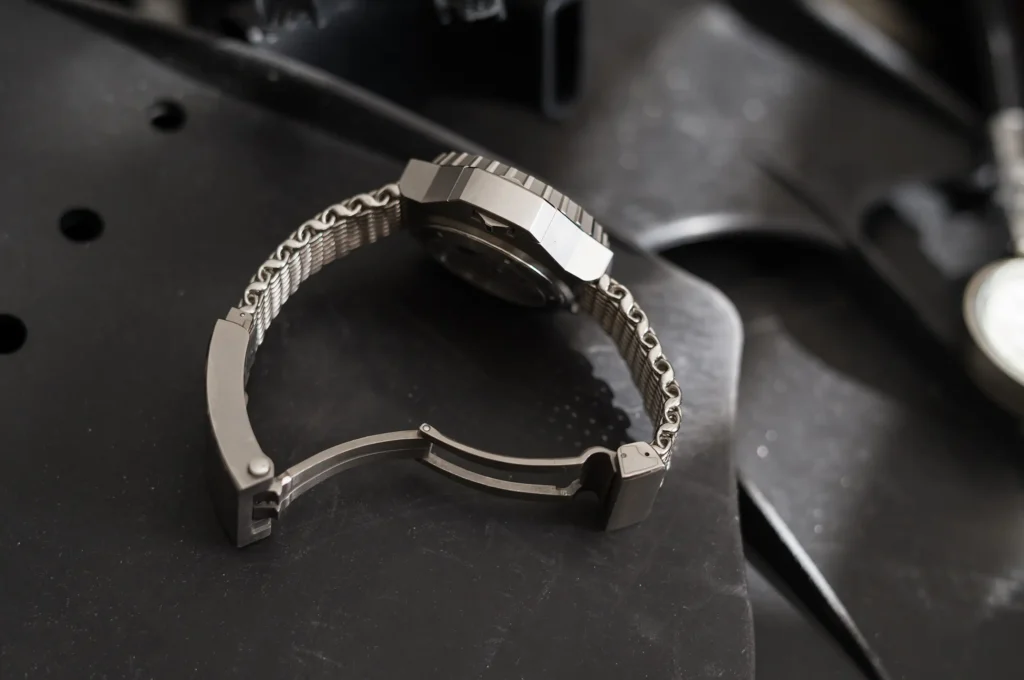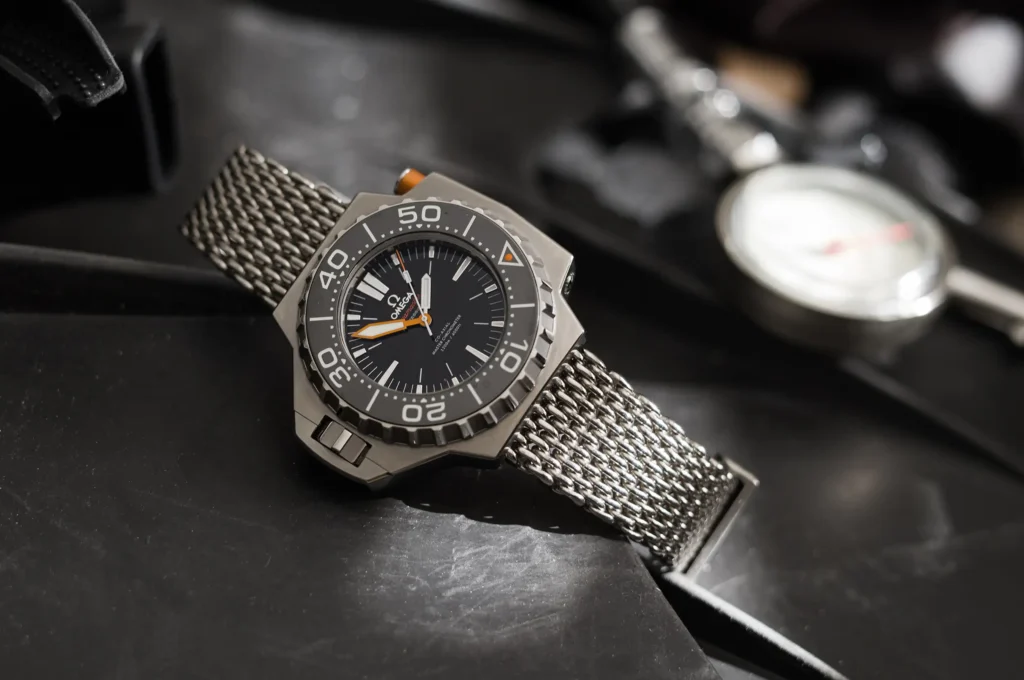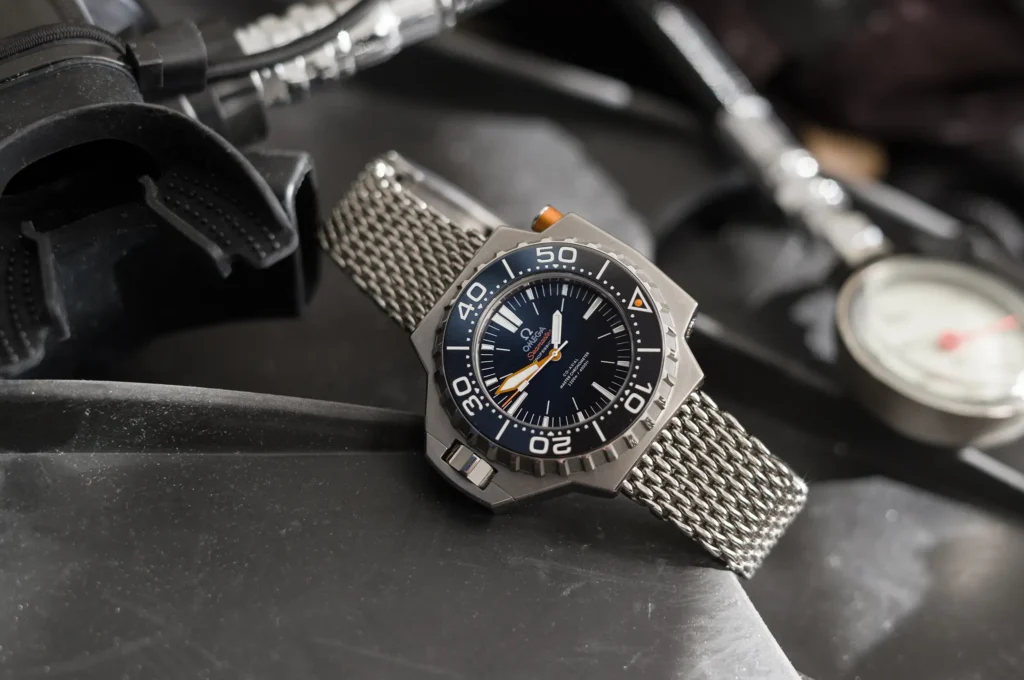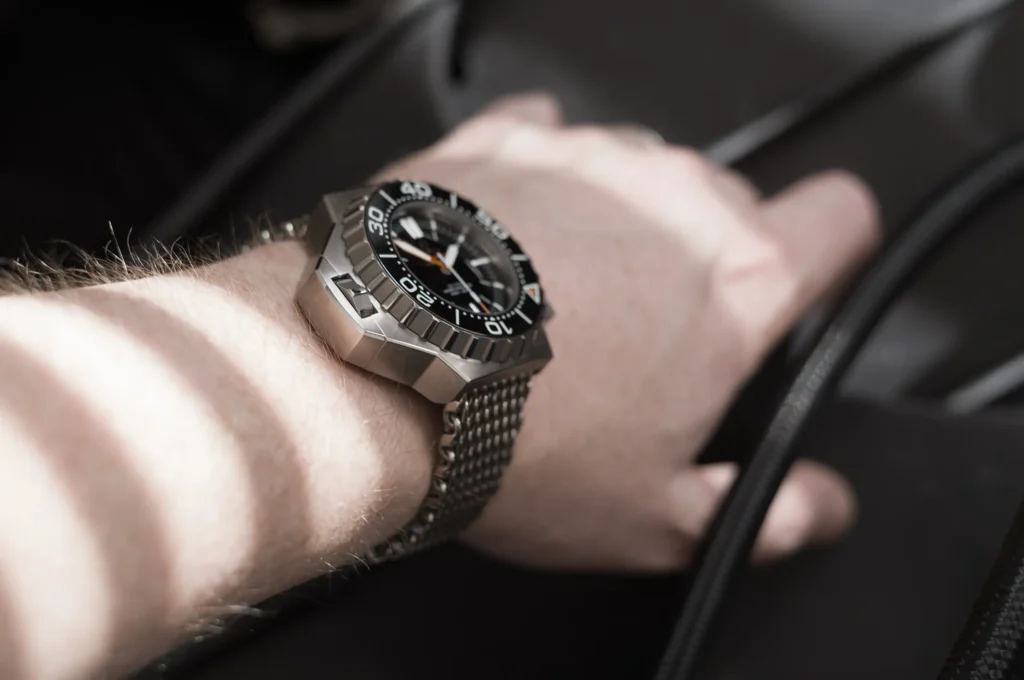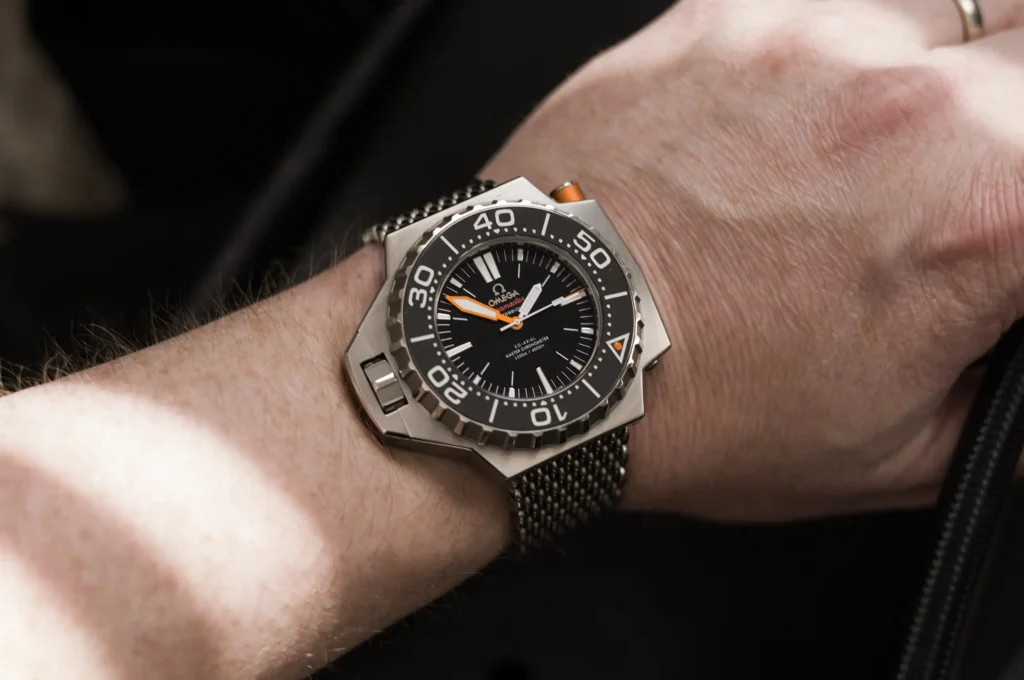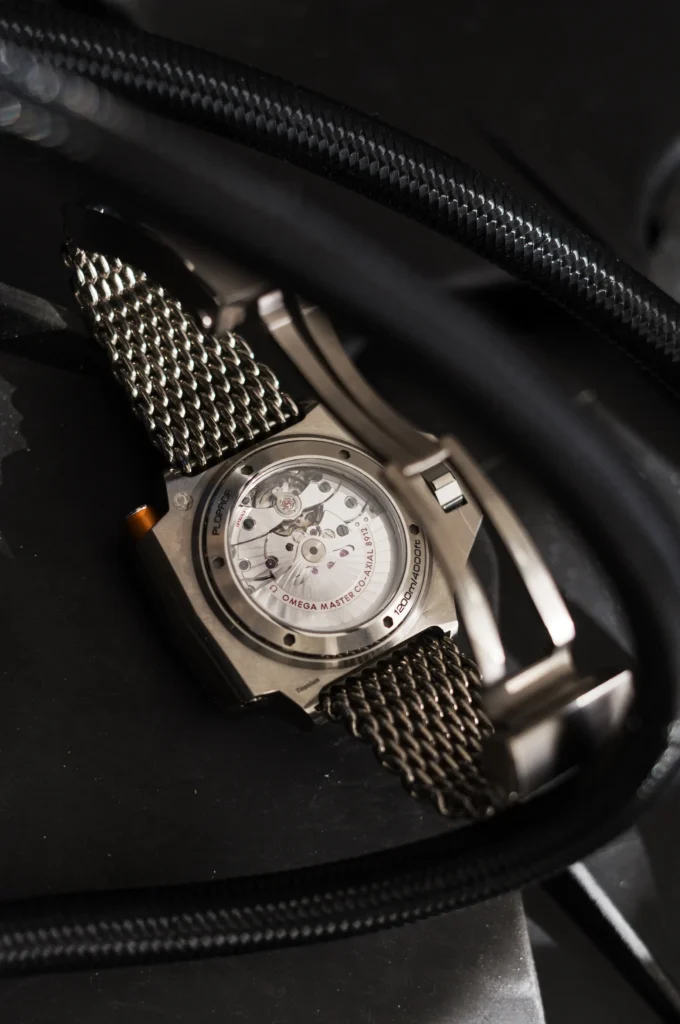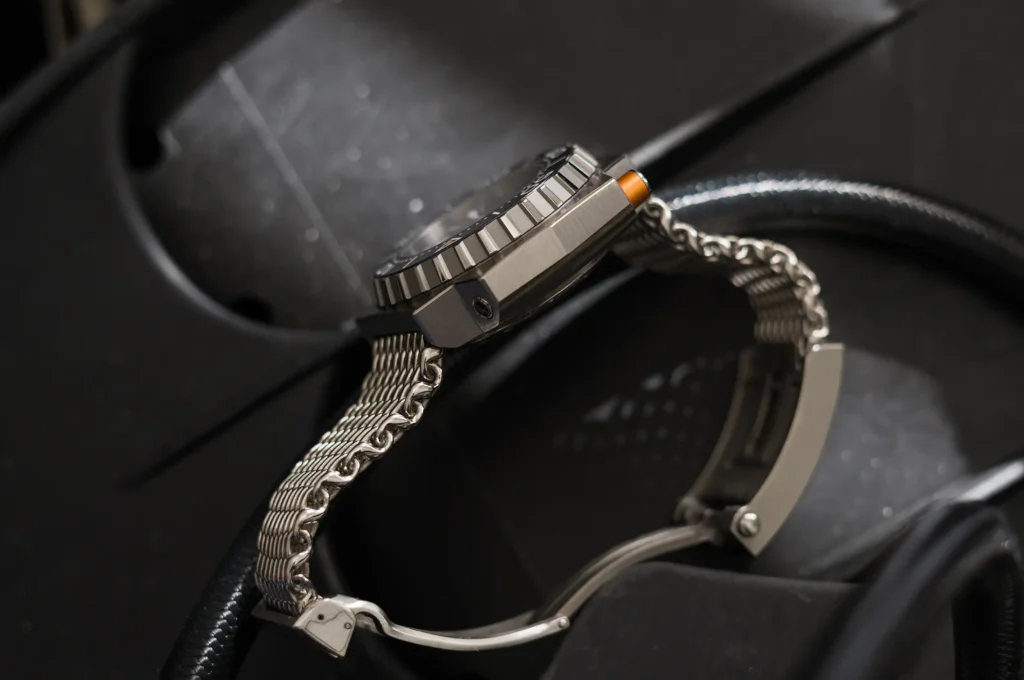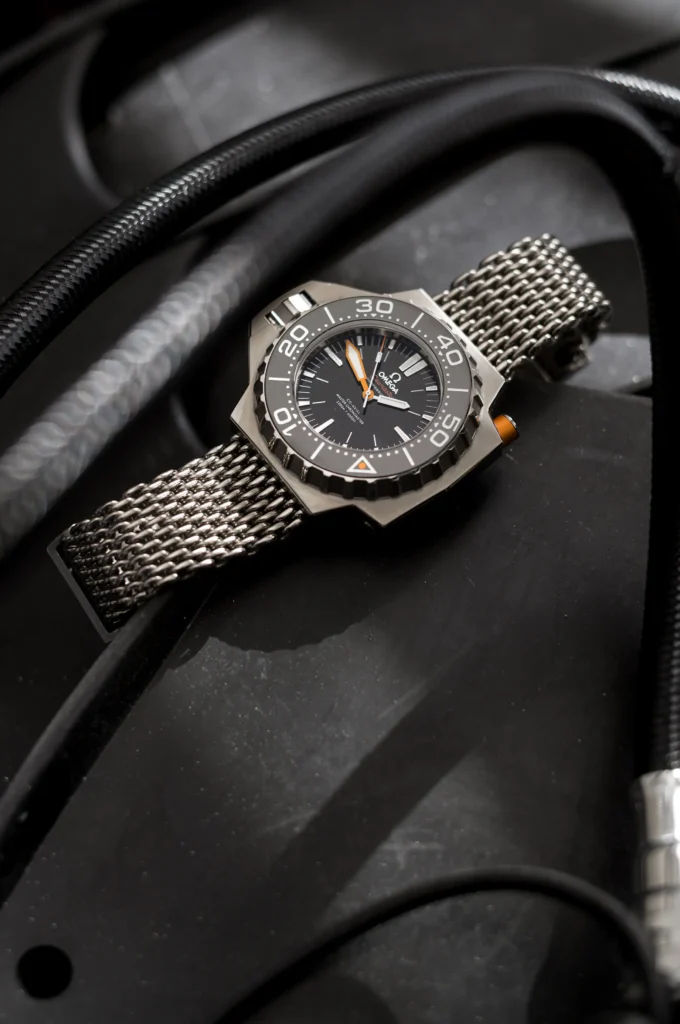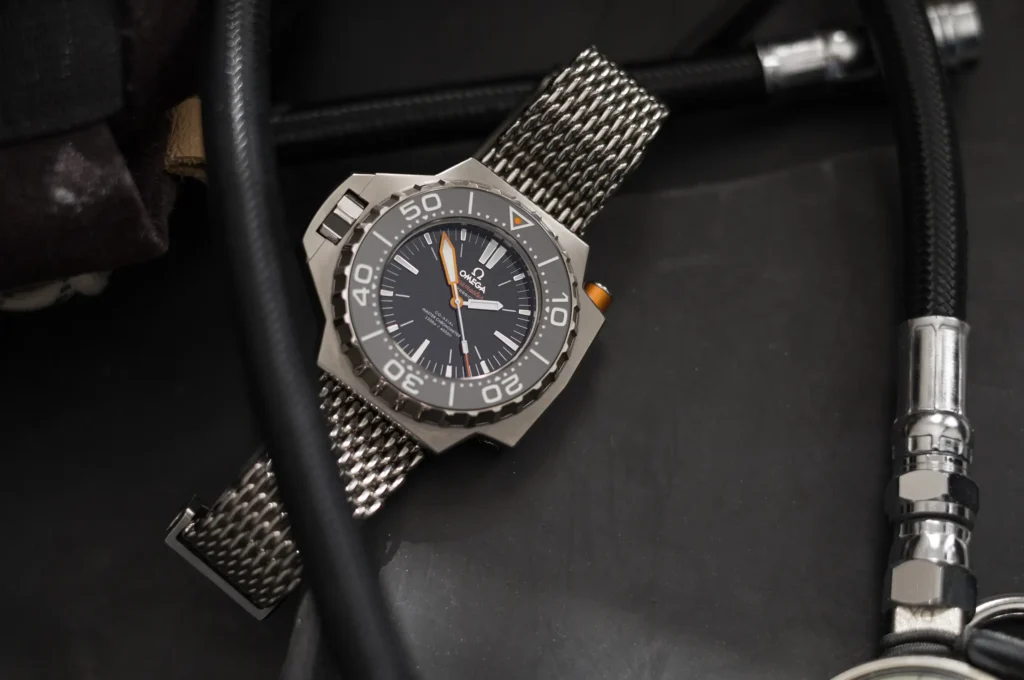As more and more watches are positioning themselves as ‘go anywhere, do anything’ types (reluctant to adhere to any single genre), the purpose-driven designs that do come along begin to feel all the more special. What they may lack in all around practicality, they make up for in the sheer experience they offer. This isn’t always the case, but it certainly has been when it comes to the Omega Seamaster PloProf, a singularly focused dive watch that emanates a character unlike any other, both back in the late ‘60s when it first appeared, and equally so today, as a new generation begins to find its footing.
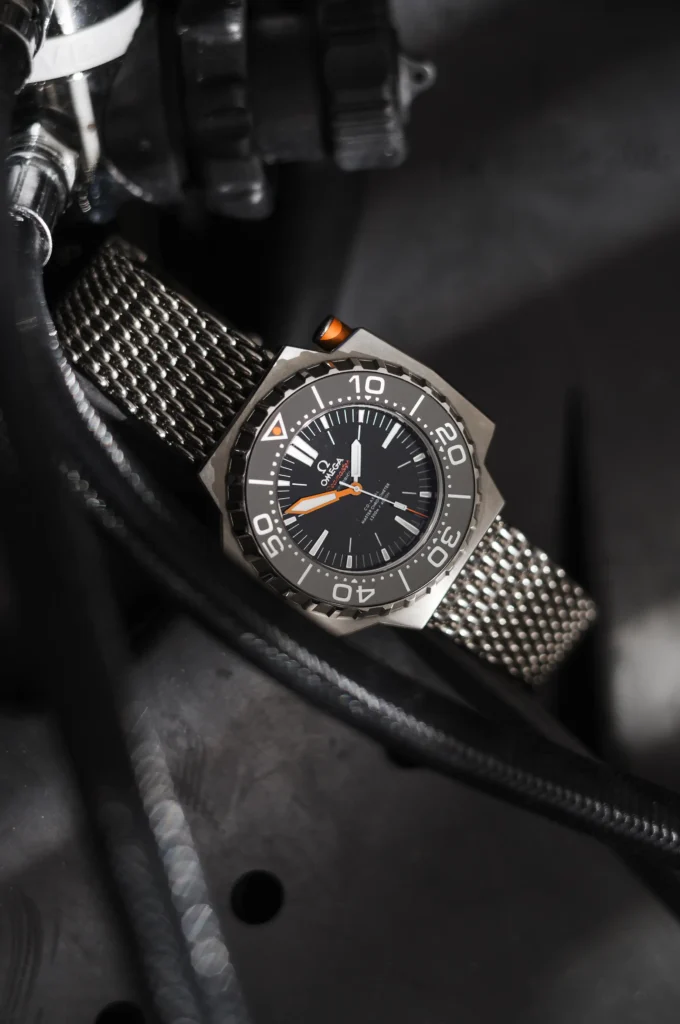
The Omega Seamaster PloProf was never really meant for a wide audience, putting function over form, even forgoing some of the trick tech of the day in favor of a more brute force approach. The result is a watch that doesn’t fit the mold of standard dive watch archetype. It’s big and even a bit cumbersome, but its effectiveness goes beyond its considerable diving capabilities. If ever there was a watch that could tell a story without saying a word, it’s this one.
Indeed, the PloProf does have a captivating story, from inception to its eventual usage by its target consumers: professional divers. At least, that was the goal when Omega set up a Marine Unit in 1968 around a man by the name of Frederic Robert, who was working to develop the framework for a 600M dive watch from a rather unusual patent filed by Omega a year prior. Robert, a serious scuba diver himself, had been contracted to advise Omega after successfully building the Aquastar brand in 1962 from the bones of JeanRichard, where he developed innovative dive watches distributed largely through professional diving equipment outlets. Aquastar produced classics like the Deepstar, the Benthos, and the Model 60 and 63, each debuting patented features such as multiple dive decompression bezels and crown sealing systems.
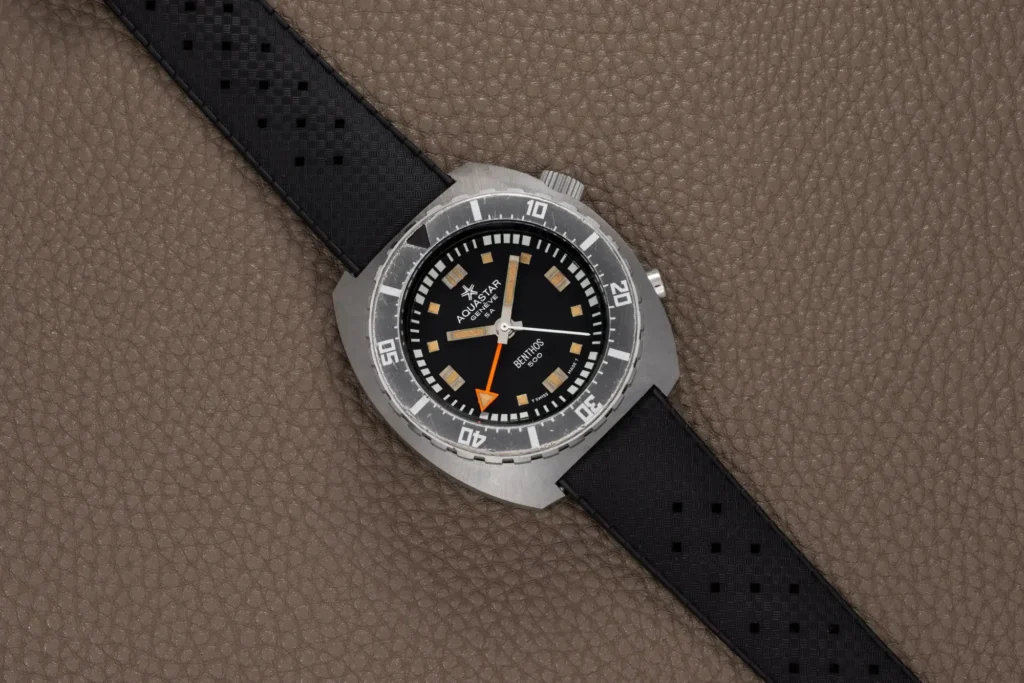
Robert was the perfect candidate to lead Omega’s efforts to establish themselves in the professional diving scene with a watch that could handle the rigors of extreme use cases. Omega’s first attempts produced something called the Super Comprex case, which featured a caseback that would form a tighter seal under greater pressures, as well as a prototype monobloc case inspired by the front loading Seamaster Cosmic from 1966. Robert’s team used a caliber 1000 into this monobloc case which looked a bit like the Mark II Speedmaster, creating the first Seamaster 1000 prototype that would give way to the initial Plongeur Professionel design.
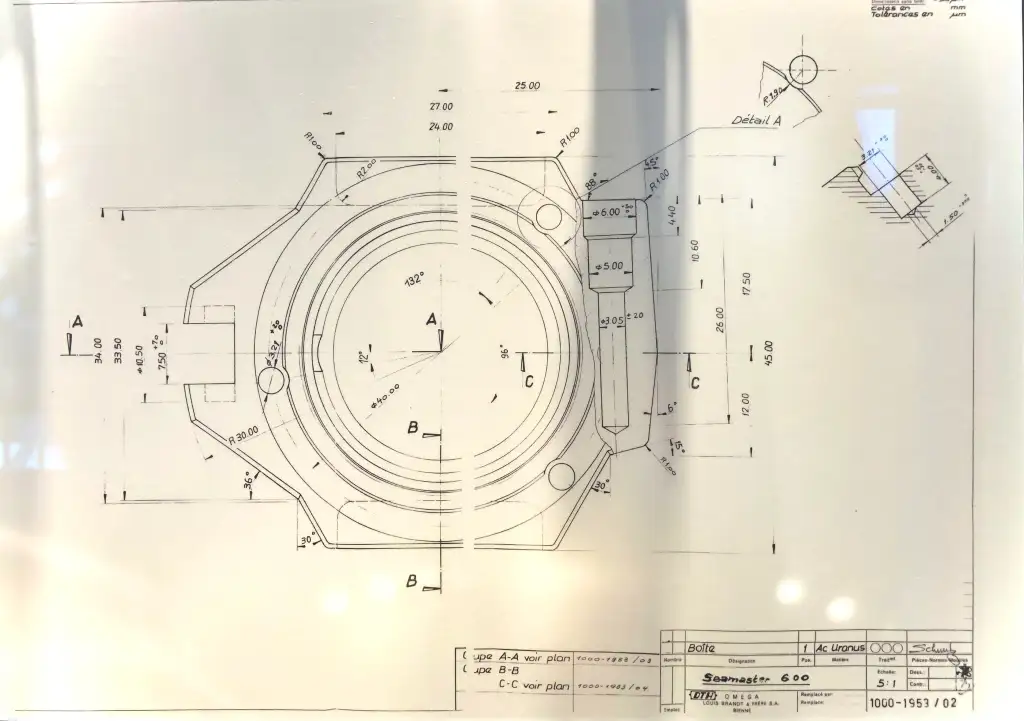
Omega prototypes have a fascinating history, which you can explore further at omegaprototypes.com.
The decision to further develop the monobloc case design was rooted in its ability to keep helium from entering the structure at all, thus forgoing the need for a helium release valve. A simple solution was also put into production by Seiko in 1967 with their 300 meter reference 6215-7000. Unlike the Seiko, Omega took a highly unconventional approach to the design of their monobloc case all in service of its unique features tailored to professional divers.
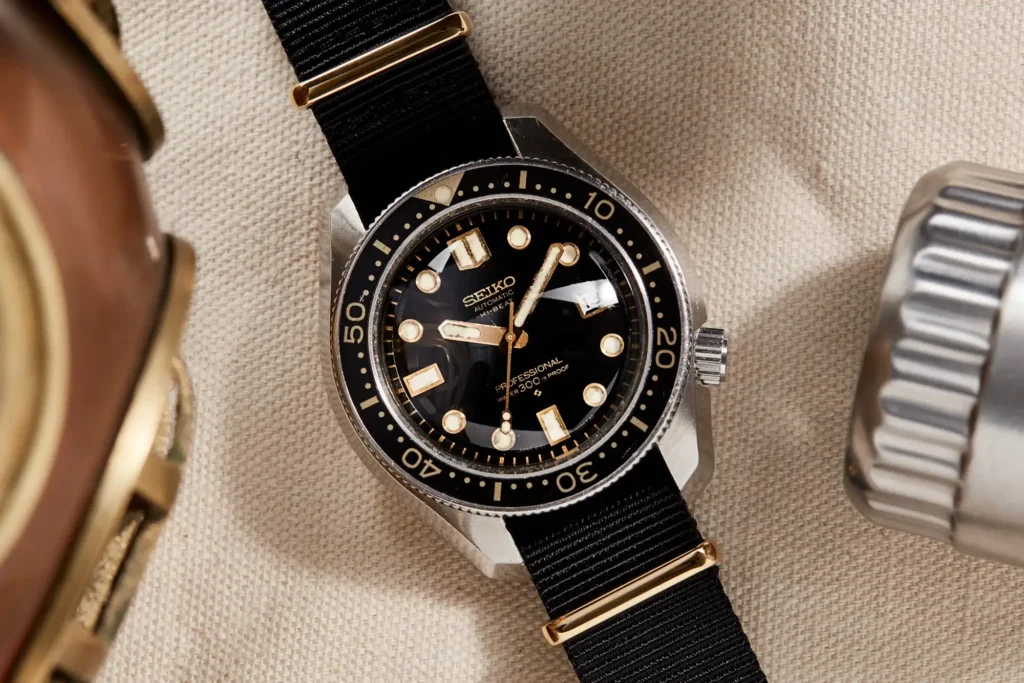
The PloProf has come to be defined by its original case design placing a large crown guard to the left, and a bezel lock release button into an apparatus at the left. The crown sits under a nut that must be untightened before making adjustments, with the end of that nut creating a flush edge against the crown guard itself. On the other side of the case is perhaps the watch’s most curious feature, a squared off case wall with a brightly colored button sticking out of the top. Pressing this button unlocks the bezel assembly, allowing divers to set it as needed without fear of accidental adjustment. The button itself requires a good amount of pressure, as it’s situated such that it can be engaged with the middle finger, while the thumb and index finger of the same hand are free to twist the bezel (bi-directionally, I might add). This operation works best with the right hand, adjusting the watch on the left wrist. It can be done the other way around, but the positioning gets a bit fussier.
These two features create the somewhat off, highly angular case shape that defies any conventional measure, and places this watch into a category all to itself. It also makes the watch easily identifiable from across pretty much any room. It’s not graceful, nor would I call it beautiful, but it makes up for all that with a huge amount of character. It’s a curious watch to behold and encourages observation from every angle.
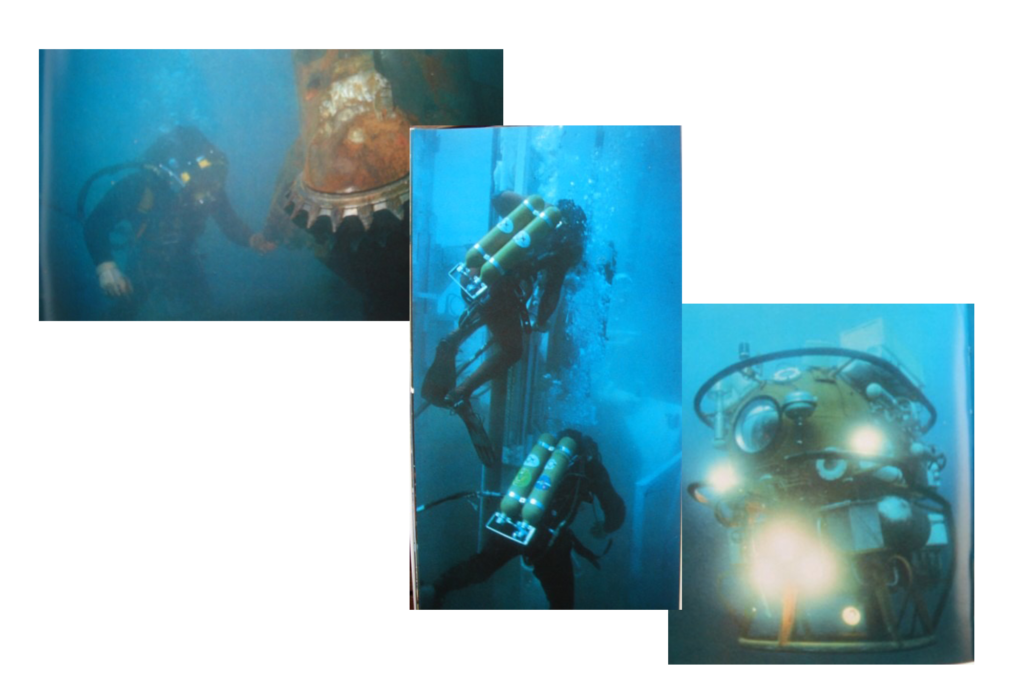
Each of these features played a part in the eventual 600 meter (1,968ft) depth rating given to the watch, an enormous measure well beyond the needs of commercial saturation divers, especially in the late ‘60s. Prototype PloProf watches were given to COMEX divers for use and testing in late ‘60s, and even underwent hypostatic testing to a simulated depth of nearly 1,400 meters before it stopped running due to the compressed crystal making contact with the seconds hand. The PloProf would accompany divers of the Janus II operation in 1970 which saw 3 divers performing 34 hours of work at a depth of 250 meters.
The PloProf was exposed to extensive testing thanks to Omega’s relationship with COMEX before it would be released to the public in 1971, with an initial reveal at Baselworld 1969. At this stage the watch was battle hardened with some serious bona fides under its belt, however the watch was borderline over-engineered for all but the most extreme circumstances. Shortly after its introduction, COMEX would move to end its relationship with Omega, and go on to become a testing partner for Rolex (a story for another day, however this article from A Collected Man is an excellent primer).
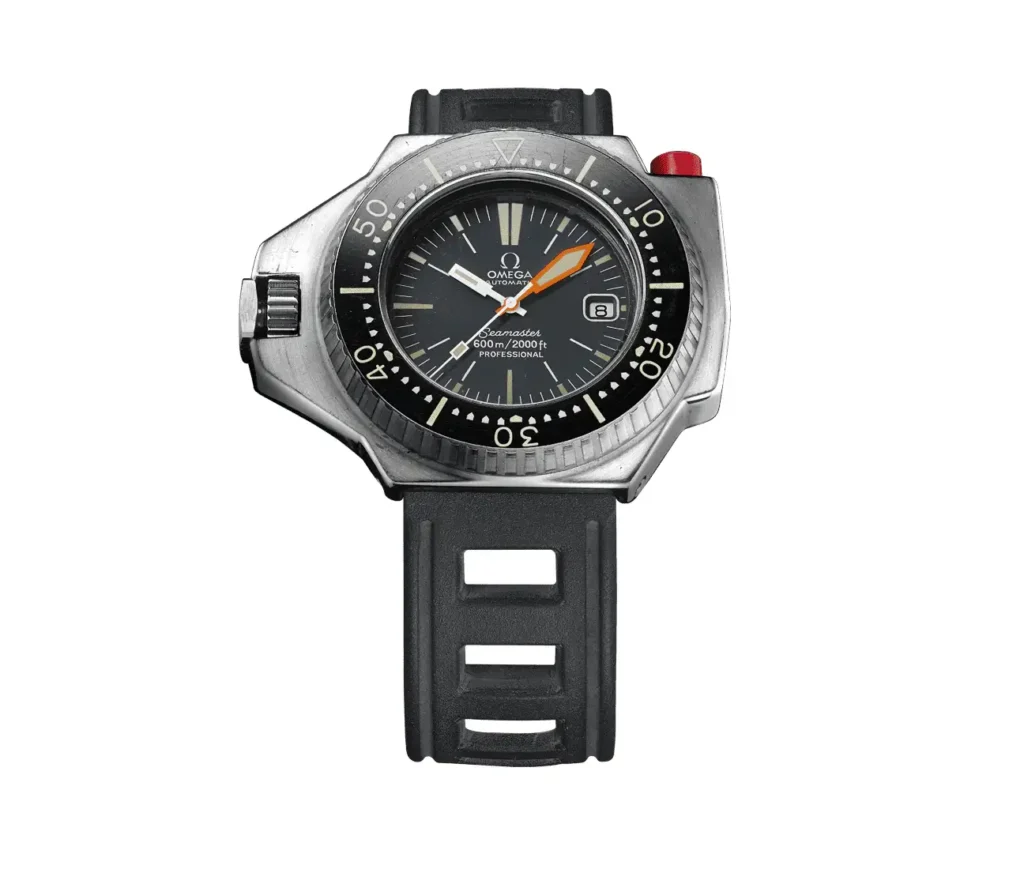
The PloProf would go on to see a small handful of variations through the ‘70s in limited production quantities, and eventually end production with a caliber 1012 equipped variant released in 1976. It would be 33 years before we’d see another PloProf put into production, with Omega re-introducing their iconic diver in 2009. The new rendition of the watch used the Omega co-axial caliber 8500 within a slightly revised 55x48mm case constructed of steel. More importantly, the design moved away from the monobloc construction, and added a helium release valve, while keeping the unique shape intact for the crown and bezel guards.
The PloProf saw its next major update come in 2016, with the addition of a titanium reference which offered a welcome reprieve from the watch’s serious heft. Not only that, but it welcomed Omega METAS approved caliber 8912 (ditching its date in the process) which was now visible through an exhibition caseback. Omega nailed the look for the most part, but seemed to have slightly lost the plot in other areas prized by enthusiasts of the original. There’s no doubt that these modern changes made the watch more palatable to a broader audience looking for a ‘luxury timepiece’ which is a bit ironic considering this watch’s raison d’etre.
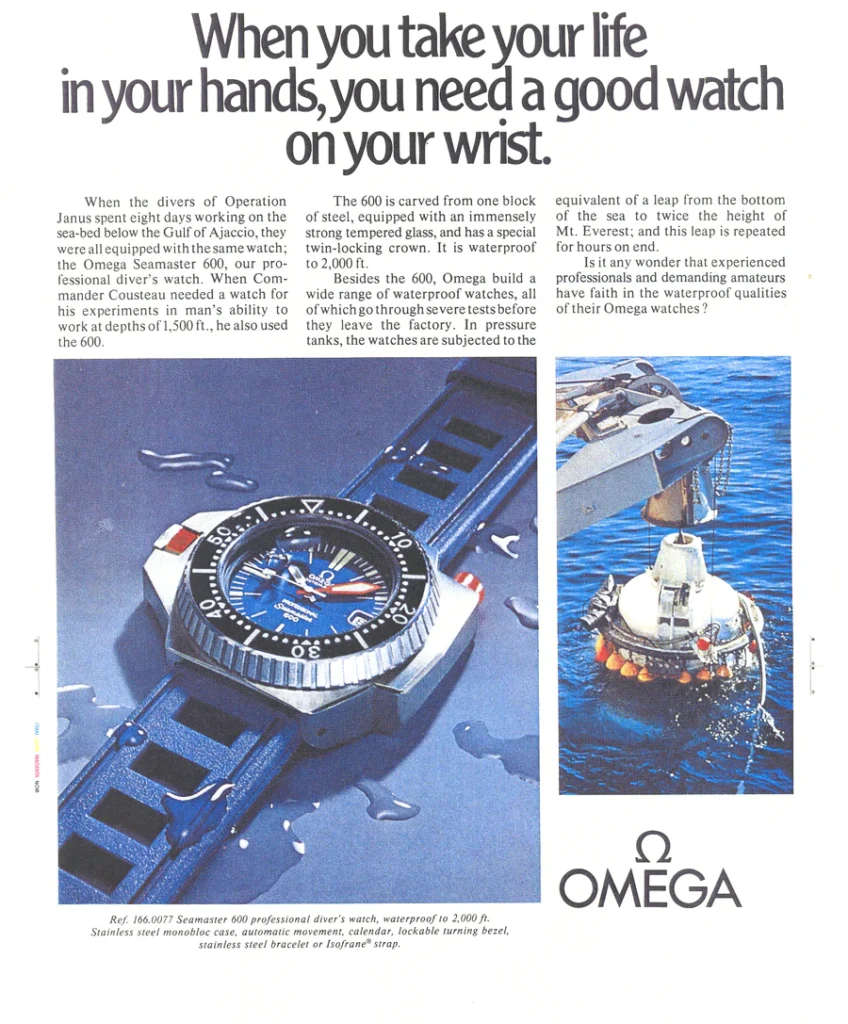
Most purpose built, over-engineered tools make serious compromises in the practicality department. An LMP1 car (or is it LMH these days?) isn’t exactly a great grocery getter, for instance. The PloProf could be seen as a similar dedication to its purpose, with some serious compromises when it comes to day to day duties in a mere single atmosphere of pressure. But that doesn’t mean it isn’t a great experience.
These days, the PloProf represents an era gone by, standing instead as a testament to innovation and engineering, and to some, a nod to the brave COMEX divers of the ‘60s. This is a watch that says a great deal about the generation that birthed it, and I suspect many of the owners and enthusiasts of the newer generation appreciate it for those reasons precisely, which makes the 2009 re-introduction and its slight deviation from the original formula all the more curious.
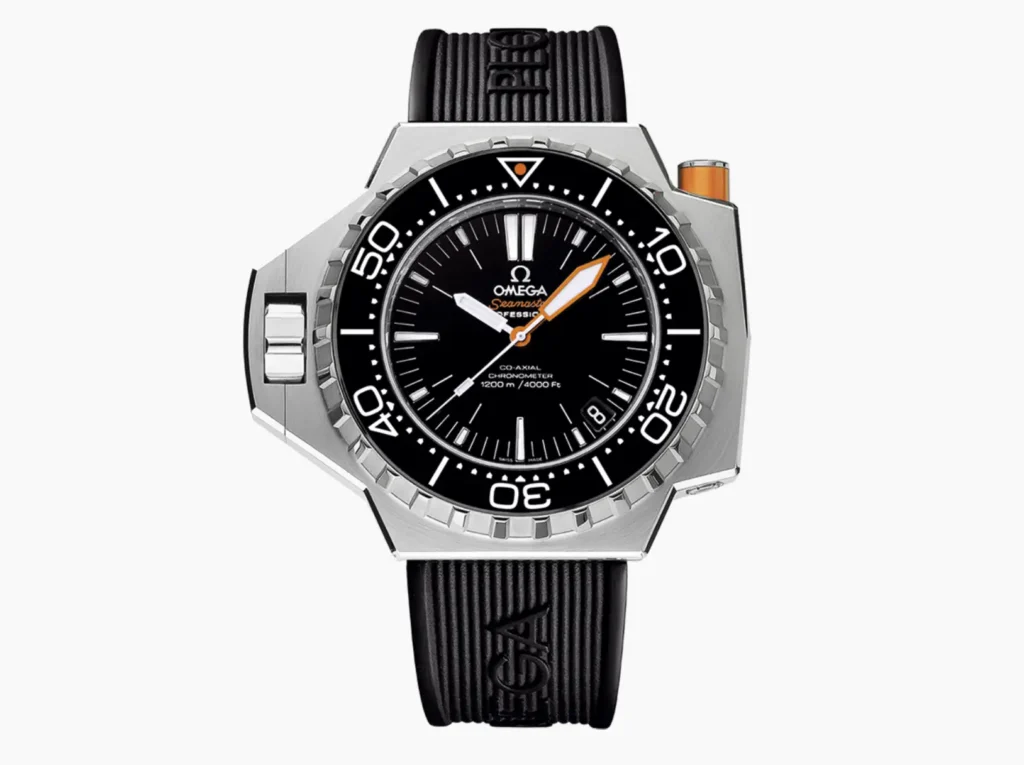
In 2023, Omega introduced a new generation of the PloProf as a part of the Seamaster’s 75th anniversary collection. With it comes a new case that adheres more closely to the original, even going back to its monobloc construction. The helium release valve remains, however, tucked under the bottom of the button apparatus. Its 1,200 meter depth rating may have something to do with that decision, double that of the original design, however it does feel an odd (disconnected, even) addition when coming back to the monobloc design philosophy.
The Titanium Seamaster PloProf 1200M
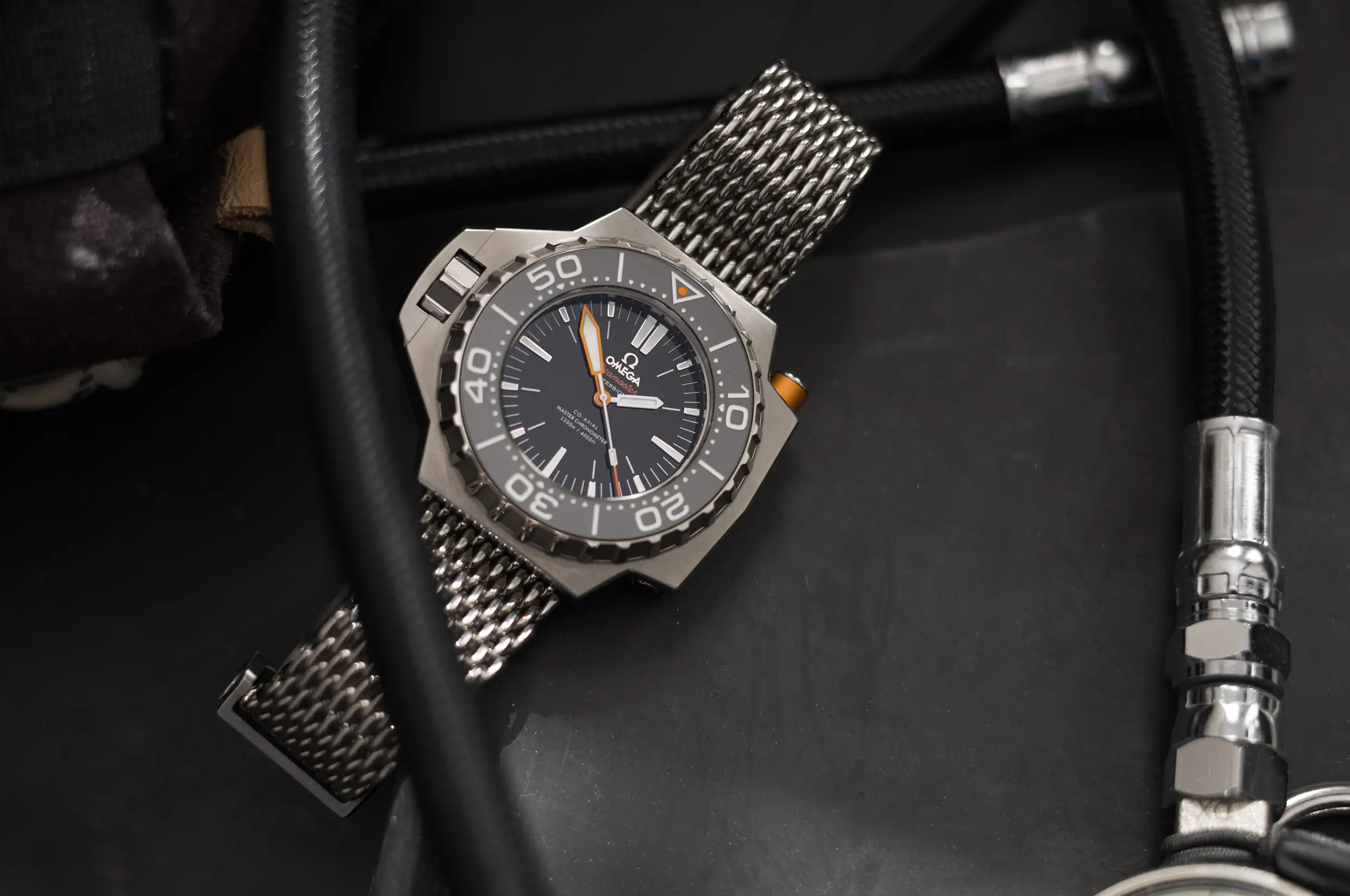
With the context in place, let’s take a closer look at the titanium PloProf released in 2016 in a colorway that has since been discontinued: black dial, and black ceramic bezel. It is said that a small number of PloProf prototypes were built in titanium, but this material was not broadly available at this time (unless you were the US government), so it was never a viable production candidate. It’s a material that makes a lot of sense for this platform, given its size and intended use as it is more corrosion resistant than steel (thanks to its iron content). So seeing a modern rendition released in grade 2 titanium created more connective tissue with the original concept than existed in the 2009 release which did away with the monobloc case.
The modern generation of this PloProf is clearly recognizable in its design, but it does deviate from the original in a few ways. The case is slightly bigger and bolder at nearly every angle, making its presence felt both visually and literally in use. Hard edges with thin chamfers separate the broad brushed surfaces, nearly all of them flat. It’s a brutal case that measures 55mm at its widest point, 48mm from top to bottom, and 18.5mm in thickness. Those numbers don’t tell the full story, however. This is not your average case shape, and while there is material left in places unaccounted for in those numbers, there’s also plenty that isn’t. That measurement at its widest point would be similar to taking a measurement to edge of the crown on a regular watch, which we don’t really do, and measurement from the closest recess to the bezel you’ll get a measurement of 48mm, and measurement from the edge of the bezel gets you to 43mm. It’s a lot of watch to be sure, but it’s not quite as dramatic as it seems on paper.
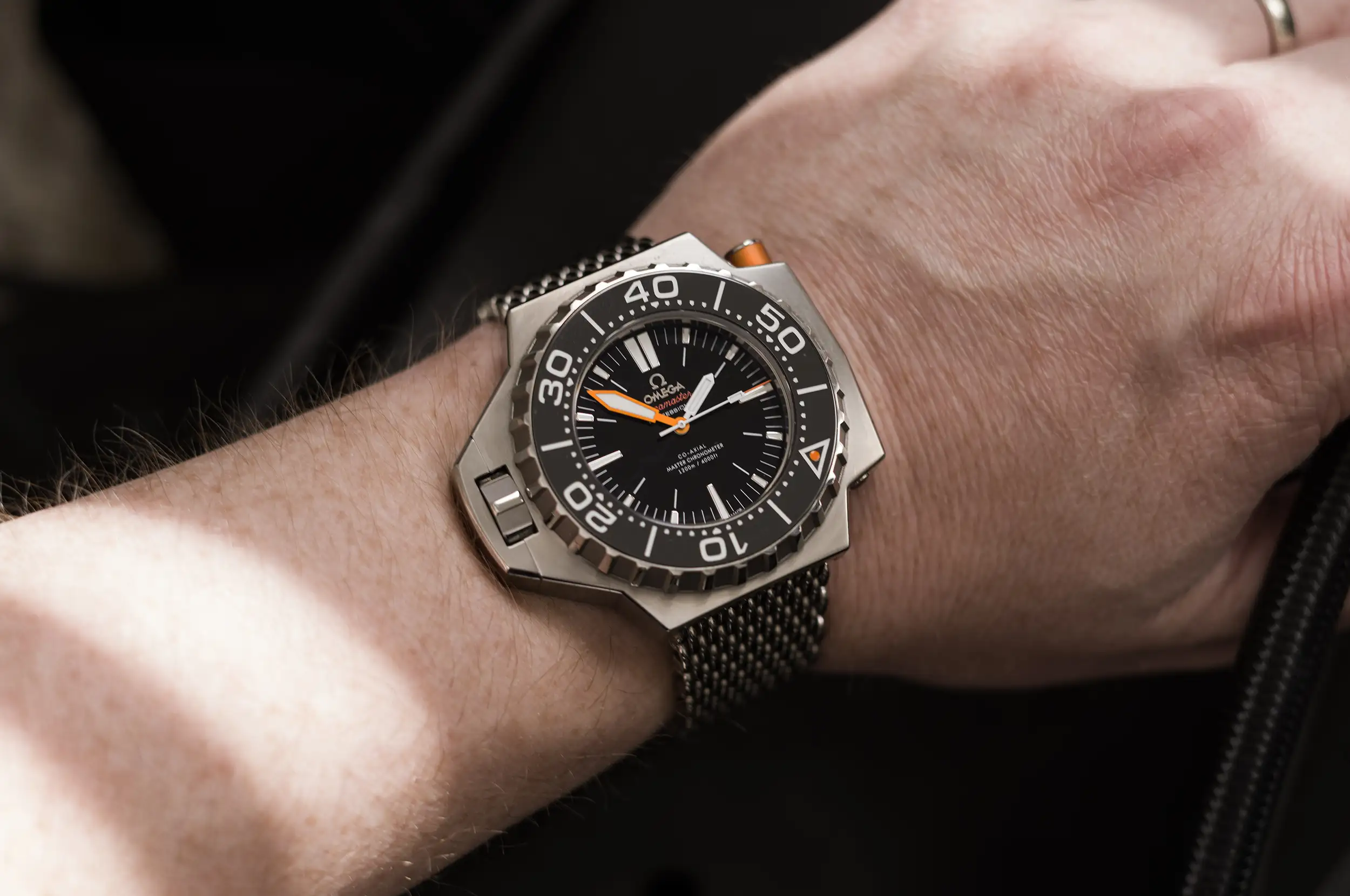
This PloProf is surprisingly wearable, all things considered. The titanium frame shaves off a handful of grams, though I still wouldn’t consider this lightweight by any means. The biggest obstacles in wear is the top heavy nature of the case on the mesh bracelet, and the crown guard hanging off the 9 o’clock wall of the case. Whether you wear this watch on your right or your left wrist, the sheer breadth of that middle section will inhibit wrist movement to some degree.
I’ll pause here to recognize the absurdity of holding this hyper-niche watch to the same standard as less extreme tool watches, even elsewhere within Omega’s Seamaster family we find more suitable daily companions such as the Seamaster 300 and Planet Ocean collections. So why view the PloProf through the same lens? In truth, this isn’t a great daily wear candidate, and it would be an ill-advised first or second watch for most of us. This is a watch that enters an enthusiast’s or collector’s radar somewhere deeper down the line, for people who are chasing history, and chasing the experience that comes with it. And let me tell you, this watch offers one hell of an experience.
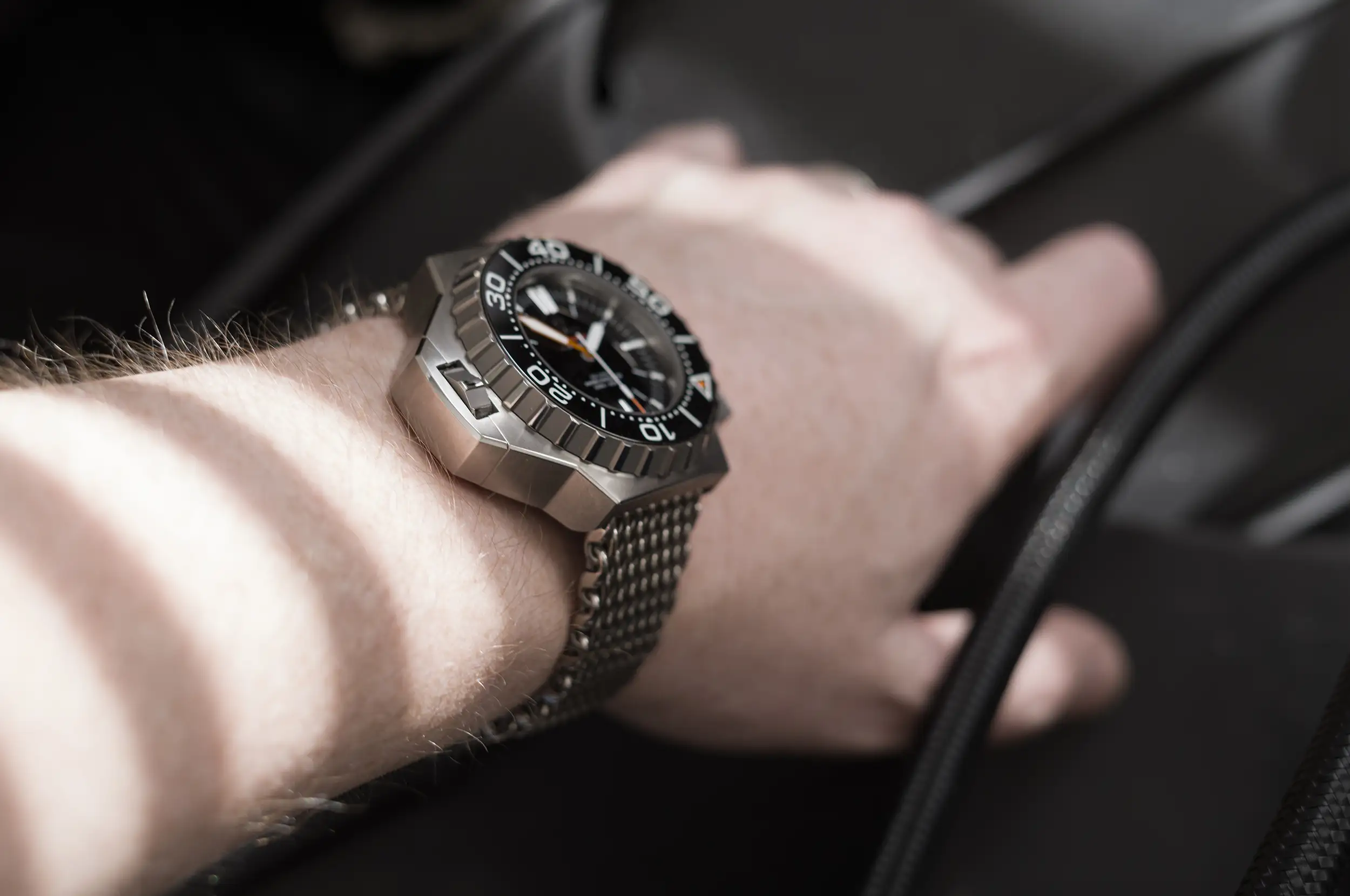
The PloProf can be worn throughout the day if you have the wrist for it, so it’s not unwearable or unapproachable, but in the same way that I wouldn’t use that LMP1 car for my grocery runs on a weekly basis, you might be able to get away with it on rare occasions (road legality aside) when you don’t need much. As impractical as it is, that rare outing for groceries in such a car would make for a pretty exciting experience. It’s a similar story with the PloProf. When it does come out and get worn, it’ll probably offer a more unique and engaging experience than your average watch.
All the qualities that you’d expect from a great dive watch are present and accounted for here: a highly legible dial free of complications, great lume, a big chunky bezel that’s also highly legible, and of course, plenty of water resistance. It also features a case that feels to be begging for some scratches, dents, and dings. Further, the METAS approved caliber 8912 inside keeps exceptionally accurate time. Sure, the crown is a bit clunky to unscrew and set underneath the massive crown guard and on the opposite side of the case than you’re used to finding it, but it’s a very satisfying part of the experience. Likewise with the bezel release, it’s a fun element to use and feels rock solid at the same time. There are plenty of quirks to enjoy with this watch, provided you appreciate what the watch is as a whole. If you don’t, you’re likely to find these quirks quite annoying.
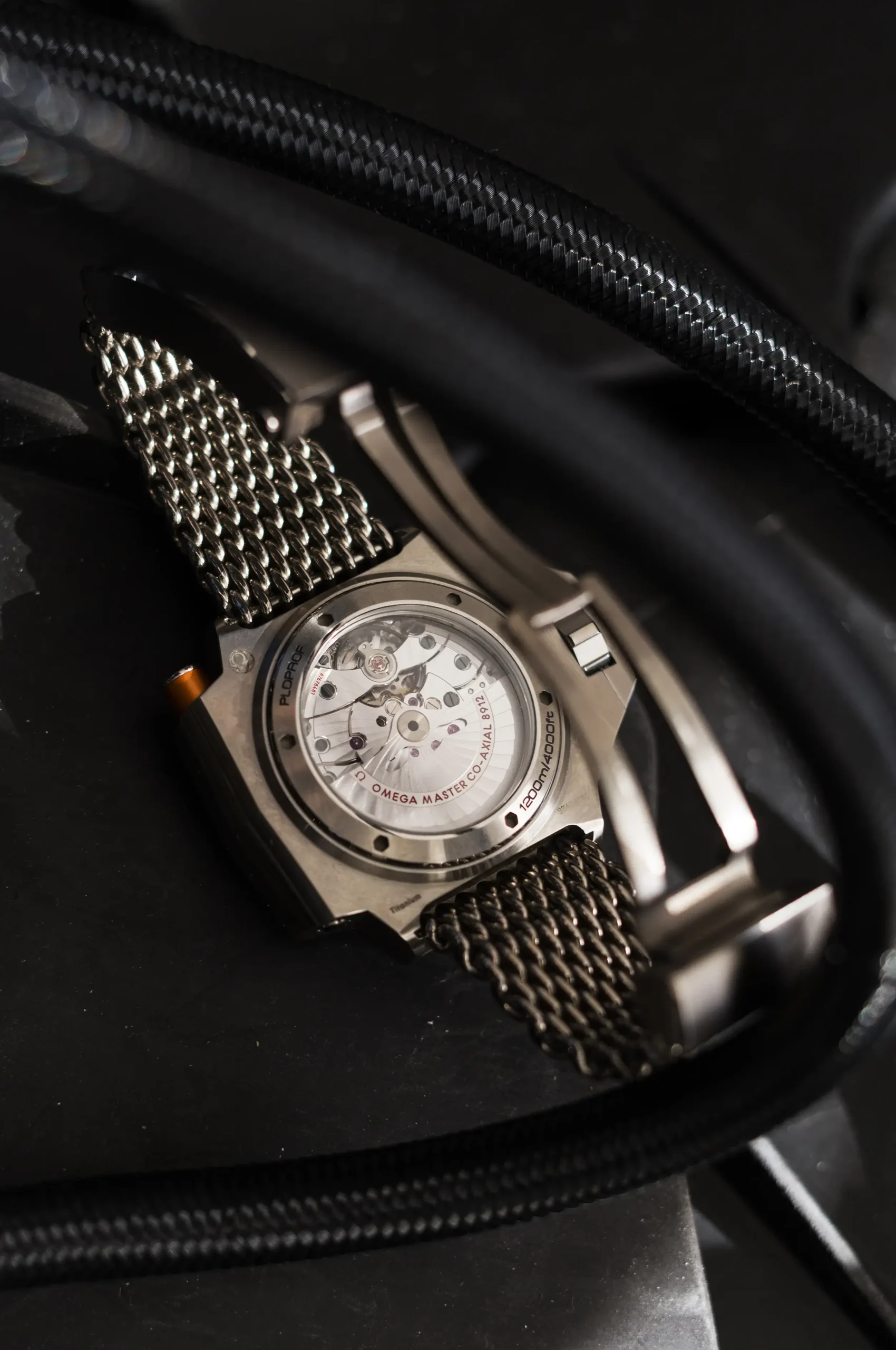
One of the more iconic features from dive watches of the ‘60s are their intricate mesh bracelets, and the PloProf was no exception. Rubber ISOfrane straps also became popular in the era, and Omega used both types on the PloProf. It’s a similar story today, as Omega offers both types with the PloProf, though I’d submit that the mech heightens the overall experience of the watch, both in look and in feel. This mesh bracelet feels relatively light and silky on the wrist, but that could just be in comparison to what it’s strapped to.
The bracelet is 24mm at the head of the watch, tucked under a flat top and bottom section, forgoing any kind of traditional lug, and tapers to 19mm at the clasp. There are multiple sections included in the full kit ensuring a decent fit can be had for all wrists. On that note, the clasp itself will come in handy as it features a 22mm adjustment span at the push of a button, and that is in addition to the pull out extension. In total, there is a massive amount of adjustability here which will easily gap the difference between thick wet suit wear, and bare wrist wear at the bar after the dive. By my measurement, there is a nearly 50mm variance between fully recessed clasp, and fully extended clasp.
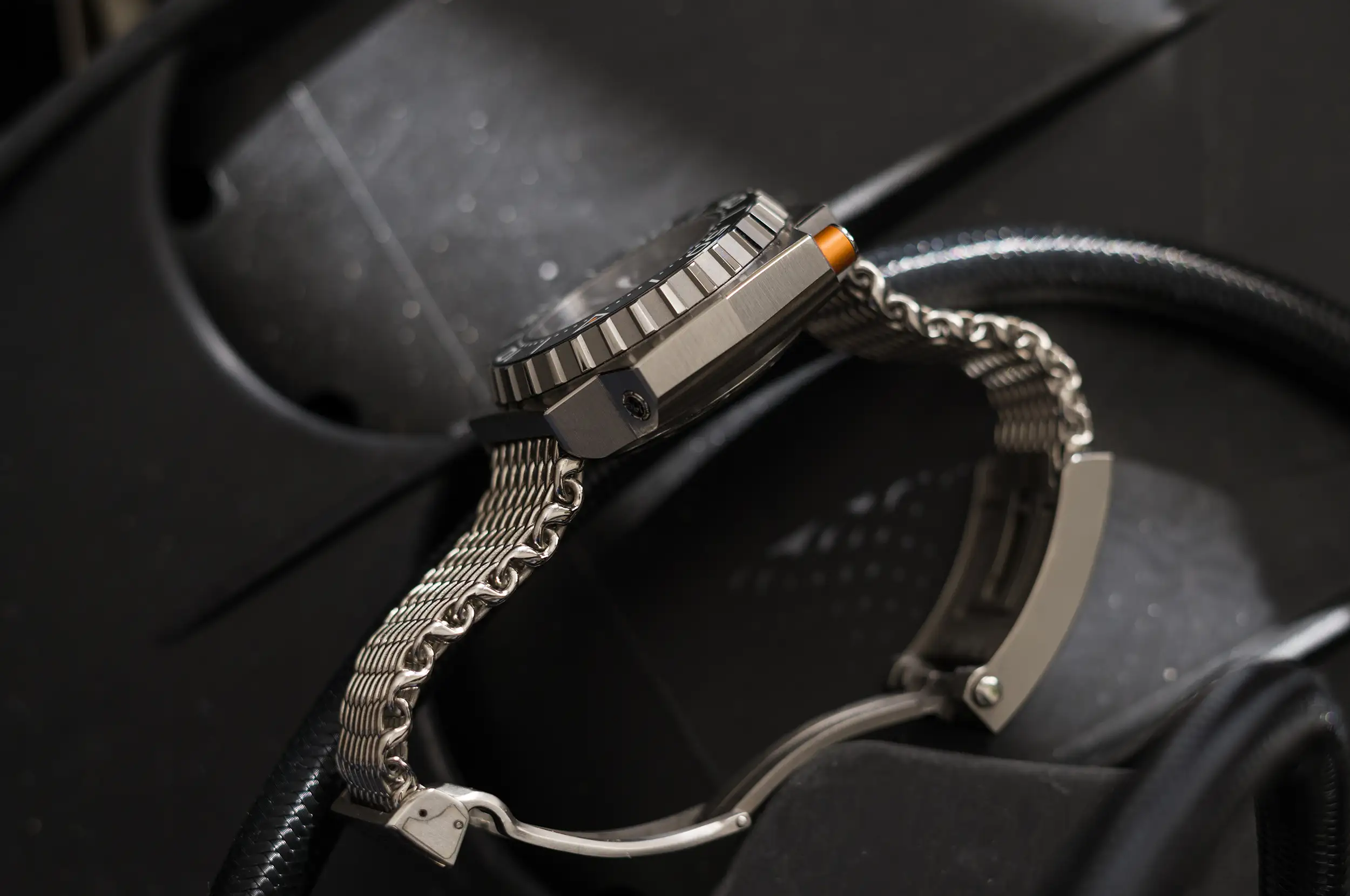
The price you pay for this is a 24mm wide clasp that wraps around a rather large section of your wrist. It will be a fair trade off for anyone looking to actually dive in the watch, or wear it with any frequency. In fact, an argument could be made that this is a great all-weather, all-terrain tool watch as it could be fitted around any number of jacket and coat sleeves, full on Gianni Agnelli style.
This is a watch that can certainly be whatever you make of it, but the somewhat exotic nature coupled with its high price point will leave it in the realm of the supercar for most. Too impractical to justify for the experience alone. When presented with the opportunity to actually dive with this PloProf, it’s difficult to escape the knowledge that it was deemed a bit overkill for COMEX divers pushing the boundaries of deep sea diving in the ‘60s. Awkward use cases abound here.
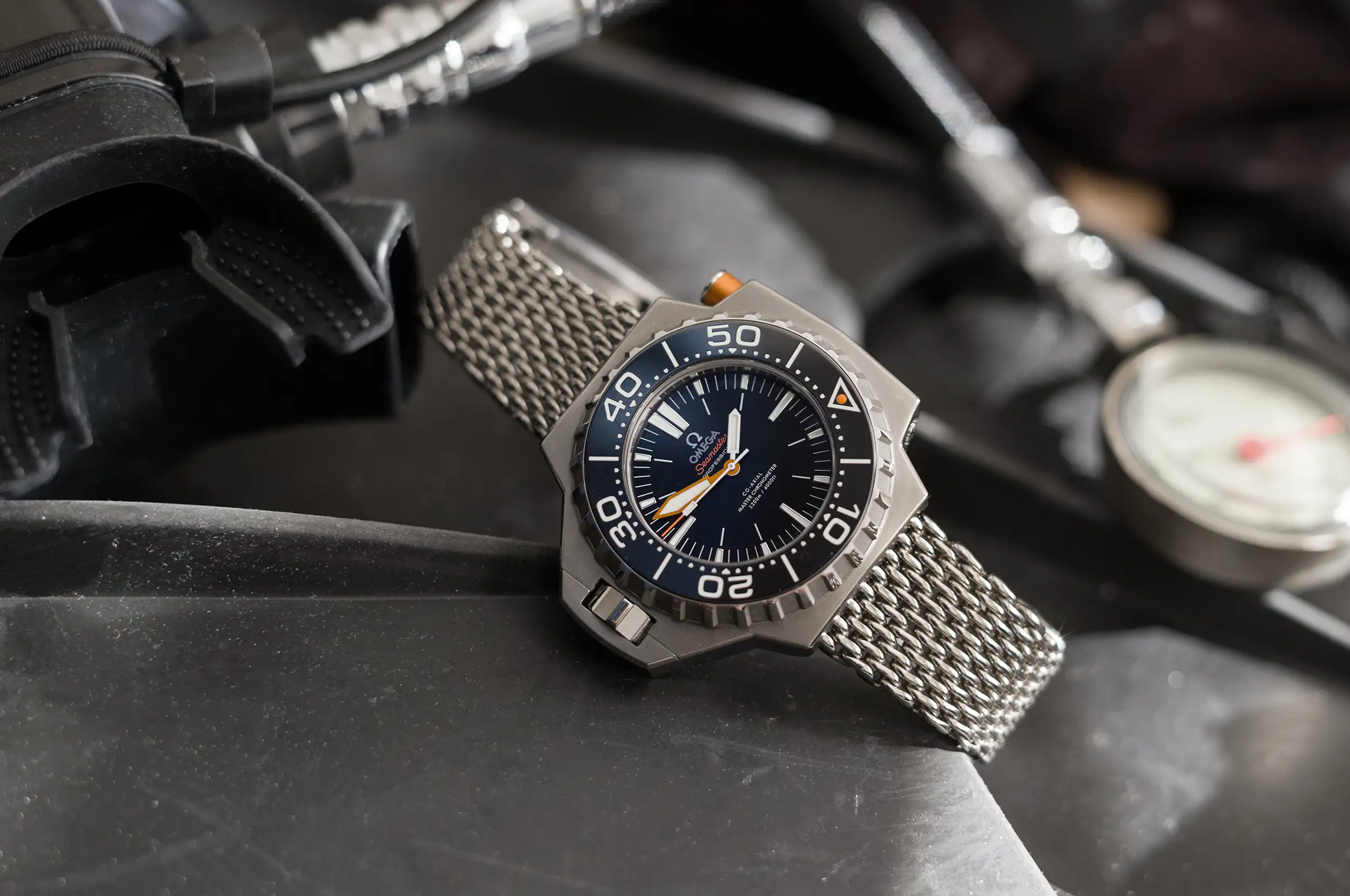
That said, enthusiasts and collectors with the means will find plenty to enjoy here, particularly if they are a student of its history. And that’s exactly where this watch makes the most sense. It’s a celebration of Omega’s past, and the ingenuity that went into the original’s development and proving. It’s also a reminder of a pre-Rolex COMEX, now called COMANEX, and their incredible work advancing our knowledge of, and ability to, conduct safe saturation diving.
The new generation of the PloProf introduced for the Seamaster’s 75th anniversary brings the modern concept a bit closer to the spirit of the original. The inclusion of an HEV is a small, but perplexing detail, and represents the only gap in that theory. I do expect the new rendition to be a bit easier on the wrist, and I dearly hope to see it rendered in other colors, including a black on black with some orange accents to truly bring the feeling home. Still, I think the PloProf will remain a curiosity to most, and a stark reminder that not all watches need to be everything to everyone.
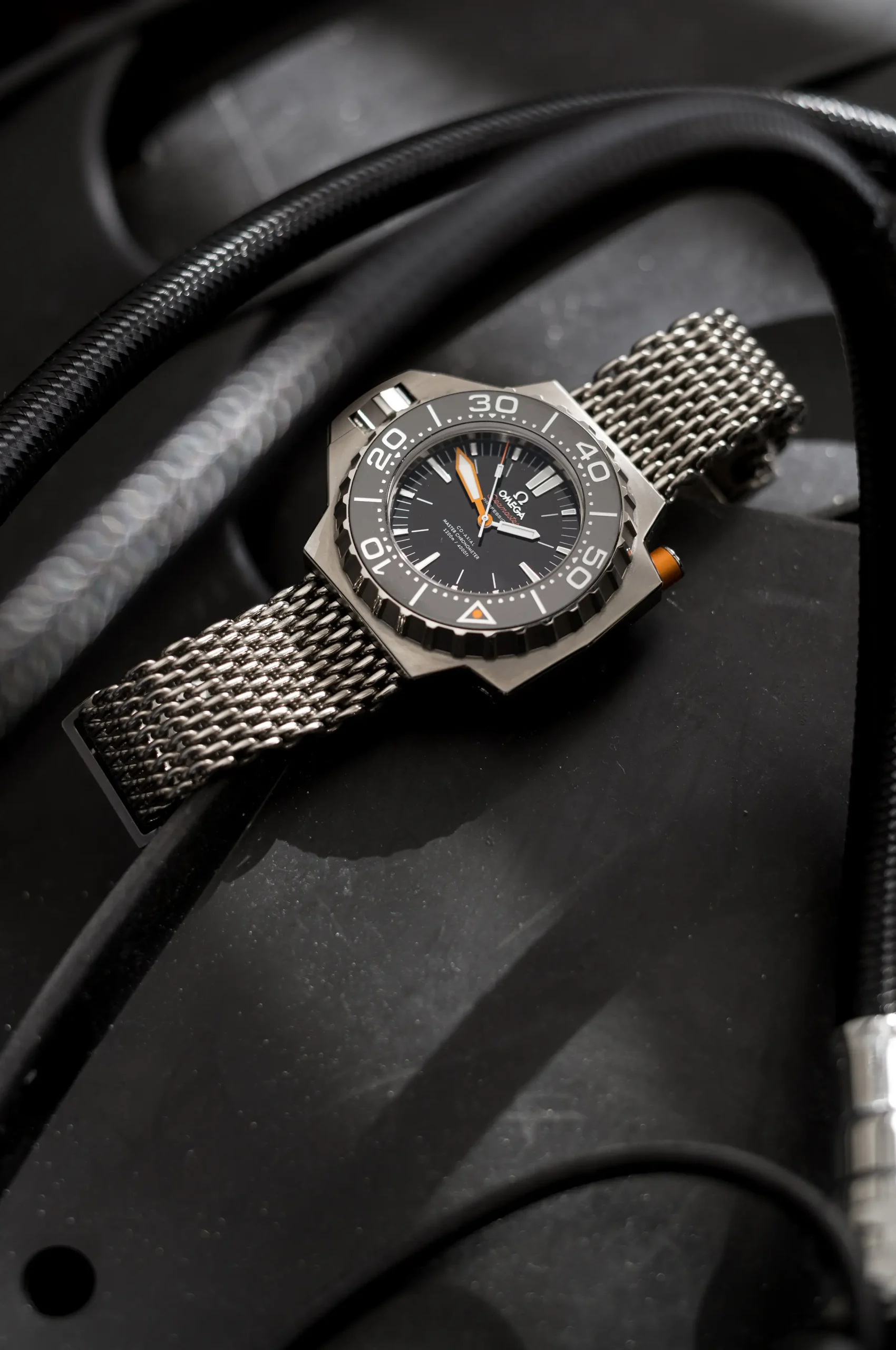
The titanium Omega Seamaster PloProf with black dial and black ceramic bezel has gone out of production, though other colorways persist alongside the new generation case design introduced last year. How these two will continue to live alongside one another remains to be seen, though ideally we’d see the standard production colorways shift to the new case design, and eventually, fingers crossed we’ll eventually see it rendered in titanium, sans one HEV.
For the time being, this configuration is a rare sight on the second-hand market, but when they do come around, prices generally hover somewhere between $9,000 and $11,000. Omega
